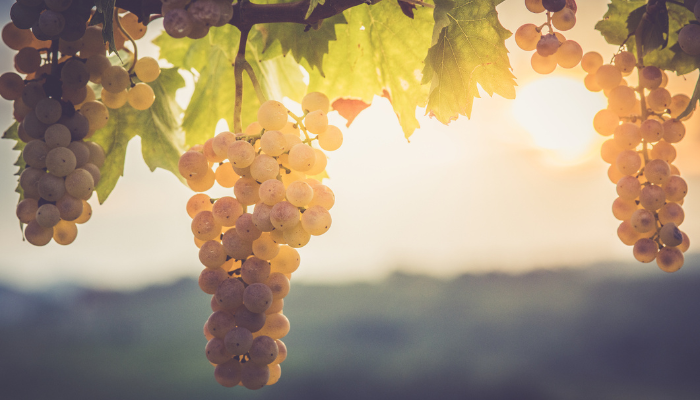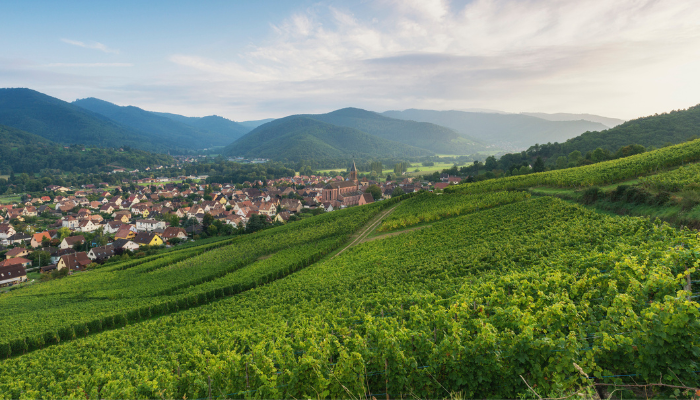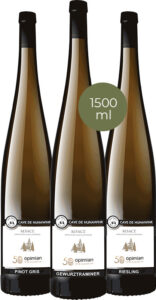By Louise Wilson MW
Worried about blind-tasting the distinctive wines of Alsace? Imagine you are a Master of Wine candidate on Day 1 of the practical exam, facing a flight of 12 white wines that you are tasked with identifying. The question states that the first three wines are different single-grape varieties from the same region. Where are we and what are these wines? With only two hours and fifteen minutes on the clock, it’s time to focus.
Aromas leap from glass 1 with floral and fruity enthusiasm–lychee, rose petal, grapefruit. A sip reveals similar flavours, a voluptuous weight and balanced but not high acidity. Most certainly Gewurztraminer. Next.
Wine 2 (you have labelled your glasses with an erasable pen, so you won’t mix them up), is equally fragrant but this bouquet is steely and focused with notes of citrus, stone fruit, mineral and a whiff of petrol. That’s the tip-off. As they mature, Riesling can develop an appealing petrol note adding an interesting juxtaposition to the fruit. Its mouth-watering acidity confirms this is Riesling.

Wine 3 is fruity, but not perfumed. It takes us on a late summer walk through the orchard, with notes of juicy red apple, pear, white blossom and honey. With moderate acidity and a dry finish, this could be a few different varieties. Let’s circle back to the question of where to see if that provides any guidance.
It’s true Gewurztraminer and Riesling can be successfully made in a number of places, but these wines have the harmonious balance, the long length and the intricate complexity that speaks to a region with a long history of growing these grapes. Calling on your knowledge bank (there is a lot of theory required to pass the tasting exam), Alsace and Germany come to mind. You remember that ninety percent of Alsatian wine is white, but some delicious Pinot Noir is made there too. In Germany, two-thirds of the wine is white, with the balance made from Pinot Noir and several other red wine varieties. Which one? Knowing the wines of Alsace tend to be weightier than those of Germany, you reason that these curvy wines were made from fruit grown in the sun-soaked vineyards found at the foot of the Vosges mountains.

Now back to wine 3. We know we are in Alsace, what else is grown here? Muscat is highly aromatic-unlike this wine. Strike that. The flavour profile aligns with Alsace’s other grapes Pinot Gris, Pinot Blanc or Sylvaner. (Time for what MW candidates refer to as a funnel.) This wine’s broad mid-palate points more to Gris over Blanc, while its moderate acidity is more typical of Gris than Sylvaner. The final answer, these delicious wines could only be a Gewurztraminer, Riesling and Pinot Gris from Alsace. Personally, I’d welcome the distinctive wine of Alsace on any practical exam, there is nothing else like it.

Louise Wilson MW lives in the Niagara region and is one of ten Masters of Wine based in Canada. She has over 20 years of experience in the wine and spirits industry and is Opimian’s Master of Wine.
Order the 50th Anniversary Magnums by Feb 20, 2023

Opimian 50th Anniversary Magnums-Riesling, Pinot Gris, Gewurztraminer, Lot 4004

